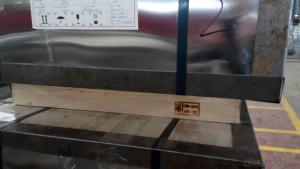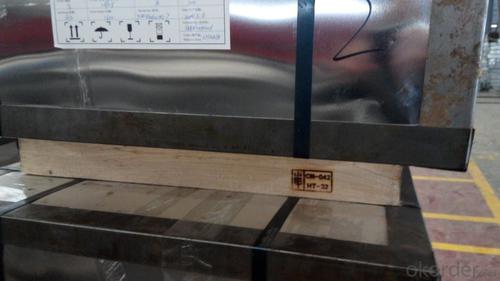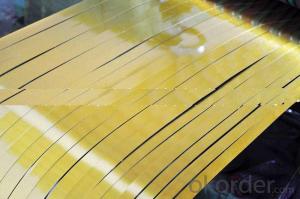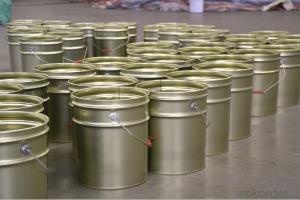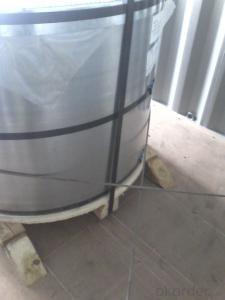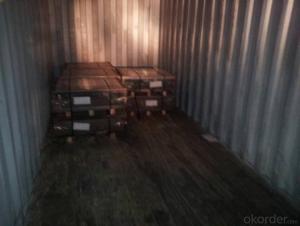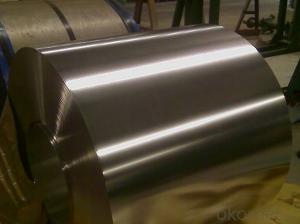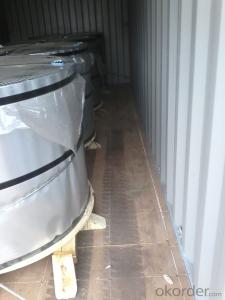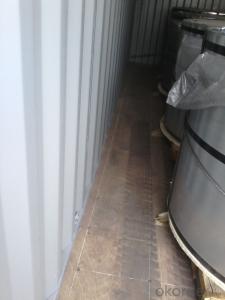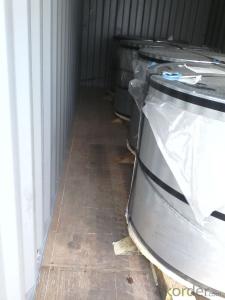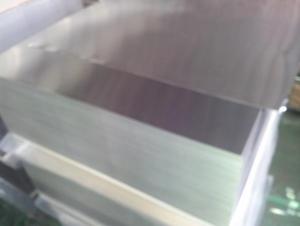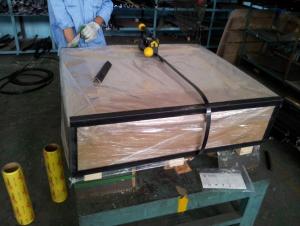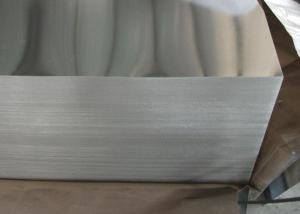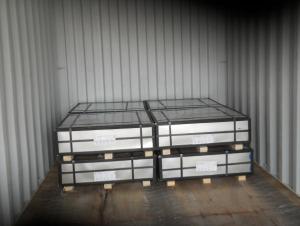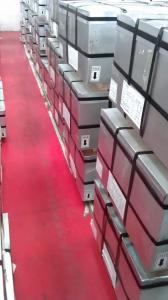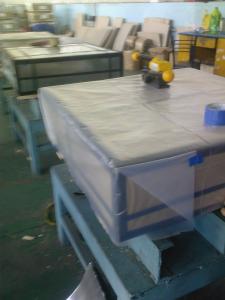Prime Good Quality ETP Tinplate for Tin Can
- Loading Port:
- China Main Port
- Payment Terms:
- TT OR LC
- Min Order Qty:
- -
- Supply Capability:
- -
OKorder Service Pledge
OKorder Financial Service
You Might Also Like
We have been producing tinplate material professionally and providing related service for decades years. Now we have been exporting our material to the world. Please kindly contact us to meet your needs for ETP materail.
Below is the specification we currently do:
1. Standard: GB/T 2520-2000, JIS G3303-2002 and DIN EN 10203-1991
2. Raw material: MR, SPCC
3.Thickness: 0.18 to 0.50mm
4. Width: 260 to 980mm
5. Coil diameter: ID 420mm or 508mm
6. Temper grade: T2, T3 and T4
7. Tin coating: ordinary 2.8 or 2.8g and 5.6g or 5.6g, can produce according to customer's requests
8. Applications: paint, chemical and other usage can make battery, electric cable and other industries
9. Package: anti-rust paper, corner protected. Sheets or coils according customer's request.
Standard for Temper:
code | Chinese Stardard | Japaness Standard | American Standard | European Standard | International Standard |
| GB/T 2520-2000 | JIS G3303-2002 | ASTM A623M-2002 | DIN EN 10203-1991 | ISO 11949-1995 |
T-2 | TH52+SE | T-2 | T-2(53) | T52 | TH52+SE |
T-2.5 | TH55+SE | T-2.5 |
|
| TH55+SE |
T-3 | TH57+SE | T-3 | T-3(T57) | T57 | TH57+SE |
T-3.5 |
|
|
|
|
|
T-4 | TH61+SE | T-4 | T-4(T61) | T61 | TH61+SE |
Surface of tinplate:
Marks | Surface state | Characteristics |
B | Bright rough | Glazed surface obtained after melting treatment of electrotinned smooth raw material strip featuring certain oriented rubstone figure. |
R | Stone rough | Glazed surface obtained after melting treatment of electrotinned raw material strip featuring certain oriented rubstone figure. |
S | Silver rough | Glazed surface obtained after melting treatment of electrotinned raw material strip with rough matt surface. |
- Q: What are the different ways to open tinplate cans?
- There are a few different ways to open tinplate cans. The most common method is using a can opener, either a manual one or an electric one. Another way is by using a knife or a pair of scissors to puncture and cut open the lid. Some cans also have pull-tab lids that can be easily opened by pulling the tab upwards. Lastly, there are specialized tools like a claw hammer or a multi-tool that have a prying function to open cans.
- Q: A tin rust problem for help
- The rusty cans, the best prevention is to use empty cans of good quality, ensure the tank, the outer wall of the antirust paint, coating thickness and curing degree basically no problem, pay special attention to the weld coating is complete. Choosing a good supplier and improving the inspection of empty cans are very important.
- Q: What are the main challenges in tinplate transportation?
- The main challenges in tinplate transportation include ensuring the proper handling and protection of tinplate materials to prevent damage or deformation during transit, managing the weight and size of the products to optimize shipping costs, and addressing any potential corrosion risks that may arise due to exposure to moisture or other environmental factors. Additionally, coordinating logistics and finding efficient transportation methods to ensure timely delivery and minimize any disruptions in the supply chain are also key challenges in tinplate transportation.
- Q: What are the properties of tinplate?
- Tinplate is a type of steel that is coated with a thin layer of tin, which imparts several key properties. It is highly corrosion-resistant, making it suitable for packaging food and beverages. Tinplate also has excellent heat resistance, making it ideal for products that need to withstand high temperatures during processing or cooking. Additionally, it has good formability, allowing it to be easily shaped and molded into various sizes and designs.
- Q: How does tinplate affect the overall product visibility?
- Tinplate enhances the overall product visibility by providing a glossy and reflective surface that attracts attention. Its smooth and bright finish allows for excellent printability, making it ideal for branding and product information displays. The reflective properties of tinplate also contribute to the product's visibility on store shelves, catching the eye of potential customers and increasing its overall appeal.
- Q: What are the different grades of tinplate?
- The different grades of tinplate include Single Reduced (SR), Double Reduced (DR), and Electrolytic Chromium Coated Steel (ECCS).
- Q: What are the cleaning agents suitable for tinplate?
- Some cleaning agents suitable for tinplate include mild dish soap, vinegar, baking soda, and commercial metal cleaners.
- Q: How does tinplate packaging contribute to product portion control?
- Tinplate packaging contributes to product portion control by providing a sturdy and reliable container that can be designed and manufactured in specific sizes. This allows manufacturers to package their products in predetermined portions, making it easier for consumers to control their intake and avoid overconsumption. Additionally, the durability of tinplate packaging ensures that the portioned products remain intact and fresh until they are consumed, further promoting portion control.
- Q: Can tinplate be used for high-speed packaging lines?
- Yes, tinplate can be used for high-speed packaging lines. Tinplate is known for its strength, durability, and ability to withstand high-speed production processes. It is commonly used in the packaging industry for various applications, including food and beverage cans, aerosol containers, and metal closures. Its smooth surface allows for efficient movement on conveyor belts, and its resistance to corrosion ensures product safety and longevity. Overall, tinplate is an excellent choice for high-speed packaging lines due to its reliability and compatibility with automated production systems.
- Q: How is tinplate different from other types of steel?
- Tinplate is different from other types of steel due to its unique coating of tin, which provides superior corrosion resistance, excellent solderability, and enhanced aesthetic appeal.
Send your message to us
Prime Good Quality ETP Tinplate for Tin Can
- Loading Port:
- China Main Port
- Payment Terms:
- TT OR LC
- Min Order Qty:
- -
- Supply Capability:
- -
OKorder Service Pledge
OKorder Financial Service
Similar products
Hot products
Hot Searches
Related keywords
